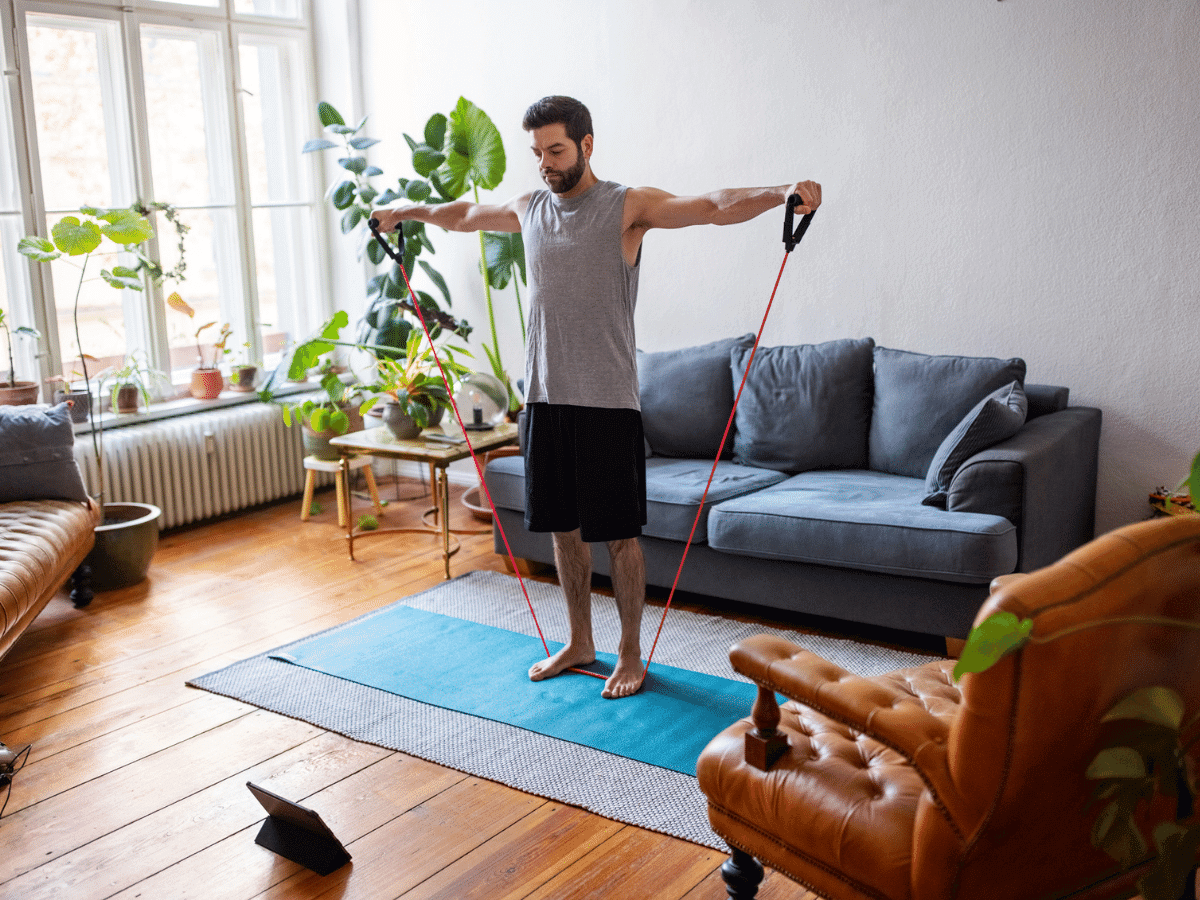Ew! Avoid Locker Room Germs While Getting Fit

You go to the gym to get healthy, so the last thing you want to do is walk out with a bug that might send you to a doctor. The gym locker room is a warm, moist place teeming with the potential for spreading trouble. That doesn’t mean you should stay away — just that you should take precautions.
Athletic trainer Maria Cosgrove, who works at both Baptist Health Madisonville and Hopkins County Central High School, knows the mistakes people make in locker rooms and offers her advice on preventing problems.
Always wear shower shoes in the locker room
The contagious fungal infection tinea pedis, more commonly known as athlete’s foot, can easily spread from the shower floor to your feet, so you need a buffer between.
“Fungi thrive in warm, moist environments, so a shower is the perfect place for them to reproduce,” says Cosgrove, a licensed and certified athletic trainer.
Some people are more prone to catching the fungus, she says, but for most, drying feet well after showering and changing socks after a workout are enough to protect against infection. If the fungus does get a start, she says, you’ll experience itching and see the telltale scaly rash pretty quickly.
Going barefoot in public showers (or pools) can also pass on the virus that causes plantar warts on your feet. Those can be painful and hard to remove.
Bring your own towel
Sharing towels with another person could expose you to both fungal and bacterial infections, from ringworm to a staph infection, Cosgrove says.
“If one person has (an infection) and you use that towel, it can easily be spread to you,” she says. “For fungal infections, that can just be spread to your skin. You don’t necessarily have to have any open lesion to be infected.”
But if you do have a cut or scrape, you could be exposing yourself to an internal infection.
Even when using your own towel, remember proper hygiene. Wash it after every use.
“Don’t store used towels in your gym bag or anything like that,” Cosgrove says. “You don’t want them to be moist for any prolonged period” because it provides the perfect environment for germs to multiply.
If for some reason you can’t wash the towel, make sure it dries properly between uses.
Wash your hands before touching your face
“Particularly in winter months when there are bacterial or viral infections, people are sick but they still come to the gym,” Cosgrove says. “Infections can easily be spread on hard surfaces such as lockers and benches in the locker room, areas that have high traffic.”
Touching your face — say, to apply makeup — after handling a contaminated faucet, door handle or locker latch could bring germs to your eyes, nose and mouth, easy entrances for a virus or bacterium.
Report any puddles or spills
This one’s about being a good citizen in the locker room: Although you might notice the slick area outside a shower stall and step over the pool of water, the next person might not, Cosgrove says. Let a staff member know about the hazard so it can be properly cleaned. You might help someone avoid a fall.
Shower after your workout
Skipping a shower raises the risk of skin infections, Cosgrove says.
“If you have sweaty clothes, you don’t want those in contact with your skin for a prolonged time. That can encourage fungi to thrive,” she says.
You want to keep your skin dry so fungi and bacteria don’t have a chance to grow or take hold.
Be conscious where you put your body parts
Everyone has seen the person in the locker room sitting bare-butt on a bench. Yuck.
Put down a towel when you’re changing.
“Be conscious of which hard surfaces you are touching with what body parts,” Cosgrove says. “You don’t want any of your bodily fluids or any of your germs passed on to other people.”
And you don’t want to pick up theirs, either. After all, everyone is at the gym to get healthier — and with a little awareness and a few precautions, locker room germs won’t stop you.



